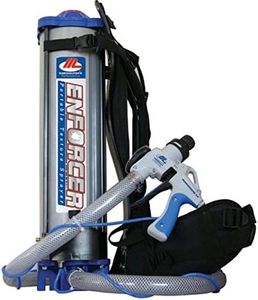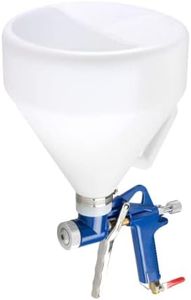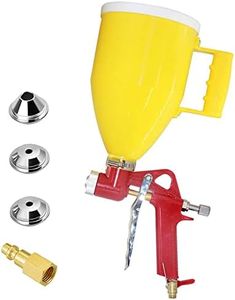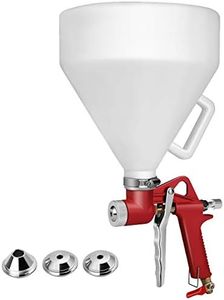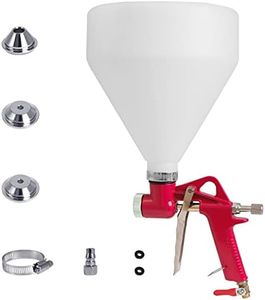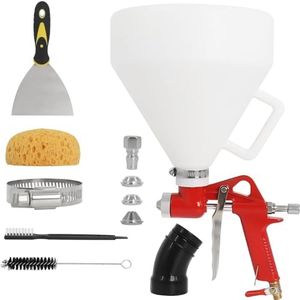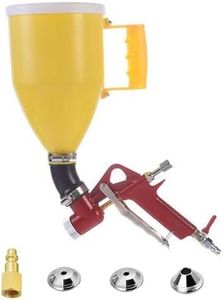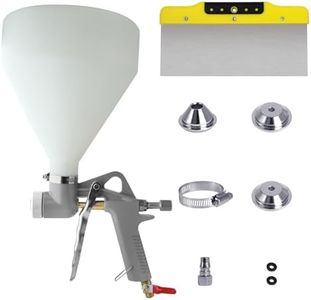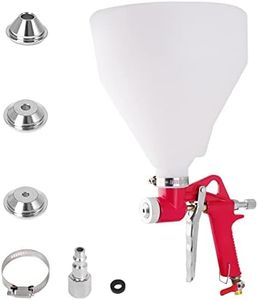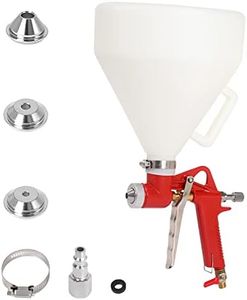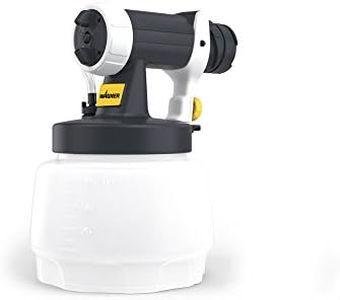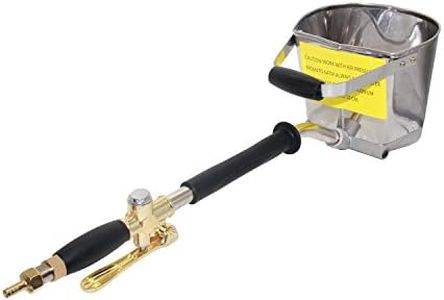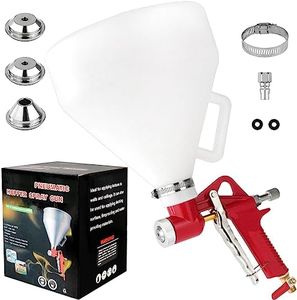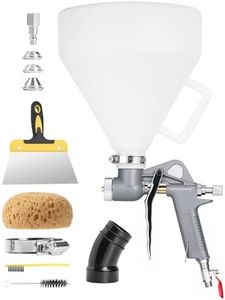We Use CookiesWe use cookies to enhance the security, performance,
functionality and for analytical and promotional activities. By continuing to browse this site you
are agreeing to our privacy policy
10 Best Drywall Texture Sprayers
From leading brands and best sellers available on the web.Buying Guide for the Best Drywall Texture Sprayers
Choosing the right drywall texture sprayer can make your projects faster, neater, and help achieve a more professional finish. The key is to match the sprayer’s features with the types of textures you plan to apply and the size of your projects. Understanding the core specifications will let you find a sprayer that’s both effective and easy to use for your specific needs.Power SourceDrywall texture sprayers are usually powered by either electricity or air compressors. Electric sprayers are often more portable because they don’t need an external compressor, making them suitable for smaller or mobile tasks. Air-powered sprayers rely on a compressor and usually offer more power, so they're better for larger or more frequent jobs. If you'll be moving between job sites or working in places without easy access to outlets, portability matters. On the other hand, for stationary, high-volume tasks, an air-powered unit is more efficient.
Hopper CapacityThe hopper is the container that holds the drywall mud or texture material. Hopper capacity is important because it determines how often you'll need to stop and refill. Smaller hoppers are easier to carry and maneuver, making them good for small patch jobs or ceiling touch-ups. Larger hoppers are heavier and bulkier but minimize refilling interruptions on big surfaces. Think about whether you're mainly tackling small repairs or whole rooms and choose a hopper size that matches your workload.
Spray Nozzle SizesSpray nozzles come in different sizes, which control the type and thickness of texture you can apply, from fine orange peel to heavy knockdown or popcorn finishes. Some sprayers come with interchangeable nozzles to let you switch between styles. If you want versatility, look for a sprayer that gives you several nozzle options. If you're focused on a single type of texture, you can go for a simpler model designed for that finish. Consider the kinds of textures you see yourself using most often.
Spray Control and AdjustabilitySpray control refers to how much you can adjust the flow and pressure of the material. More control allows you to fine-tune the texture, switch between thick and thin sprays, and handle different materials. Some units have built-in dials or levers for this, while others are controlled by compressor settings. If you're a beginner or want more precise results, easier adjustability will help you avoid mistakes and messy overspray.
Ease of Cleaning and MaintenanceAll texture sprayers need regular cleaning to prevent clogs and maintain performance. Some sprayers are designed with quick-release parts or smooth interior surfaces that make them easier to rinse and maintain. If you'll be using your sprayer frequently, look for models designed with cleaning in mind; this will save time after every job and prolong the life of your tool.
Weight and ErgonomicsBecause texture sprayers can be heavy when full, especially with a large hopper, the weight and handle design become important for comfort. Lighter, well-balanced sprayers are easier to use for extended periods, especially when working overhead. If you anticipate long sessions or lots of ceiling work, pay attention to ergonomics and the total weight when loaded.
